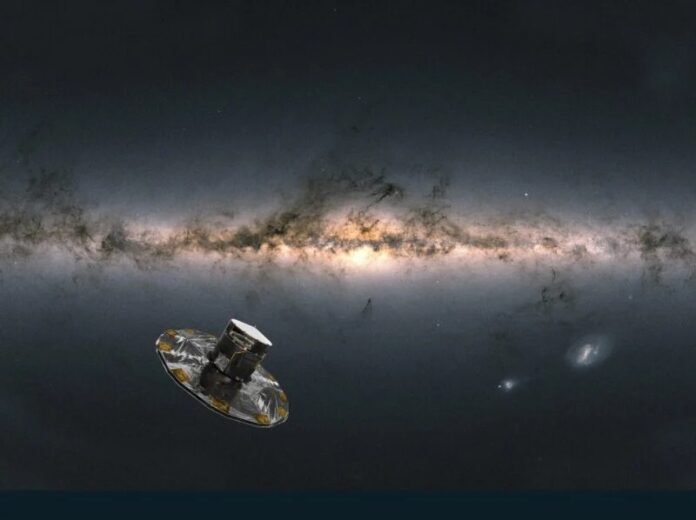
The European Space Agency (ESA) officially concluded its Gaia mission on March 27, 2025, marking the end of one of the most ambitious astronomical projects in history. Launched in December 2013, Gaia has revolutionized our understanding of the Milky Way galaxy by providing unprecedented data on its structure and evolution.
The Gaia Mission: An Overview
Originally named the Global Astrometric Interferometer for Astrophysics, Gaia was designed to map the cosmos in three dimensions. The mission’s primary goal was to precisely measure the positions, movements, and properties of billions of stars, offering new insights into the dynamic nature of our galaxy.
Positioned at Lagrange Point 2 (L2), approximately 1.5 million kilometers from Earth, Gaia was strategically placed to observe the universe without interference from celestial bodies. This location ensured optimal stability and visibility, allowing Gaia to conduct high-precision astrometric measurements.
Technological Innovations
Gaia was equipped with cutting-edge instruments that enabled it to collect vast amounts of astronomical data:
- Twin Telescopes: Captured observations across a wide field of view.
- Billion-Pixel Camera: The largest digital camera ever flown in space, capable of detecting incredibly faint celestial objects.
- Three Key Instruments:
- Astrometer – Measured star positions with extreme precision.
- Photometer – Analyzed the brightness and color of stars.
- Spectrometer – Determined the composition and motion of stars by analyzing their spectra.
Gaia’s Contributions to Astronomy
Over its operational period, Gaia made 3 trillion observations of around 2 billion stars and other celestial objects. The mission has resulted in over 13,000 scientific publications, dramatically enhancing our knowledge of the Milky Way’s composition and evolution. Some of Gaia’s most significant findings include:
- Mapping the Milky Way’s Complex Structure: Gaia unveiled the galaxy’s warped disc and central bulge, revealing new details about its shape and formation.
- Tracking Stellar Movements: The data provided a clearer picture of how stars migrate, influenced by gravitational interactions.
- Unveiling Galactic Evolution: By identifying remnants of past galactic mergers, Gaia helped astronomers reconstruct the history of the Milky Way.
Discovery of Black Holes and Asteroids
Beyond mapping stars, Gaia made remarkable discoveries in other areas of astronomy:
- Black Holes: Gaia identified a new type of black hole detectable only through its gravitational effects, a significant breakthrough compared to traditional detection methods that rely on emitted light.
- Asteroids: The spacecraft cataloged over 150,000 asteroids, providing crucial data on their orbits and characteristics, some of which could pose potential threats to Earth.
Retirement and Future Data Releases
Following its final observations, Gaia was passivated, meaning all its energy sources were depleted to prevent interference with future space missions. The spacecraft has transitioned into a retirement orbit around the Sun.
Despite the mission’s conclusion, a substantial portion of Gaia’s data remains to be processed. ESA has scheduled future data releases in the coming years, ensuring that Gaia’s impact on astronomy will continue well beyond its operational lifespan.
Scientific Legacy of Gaia
Although Gaia mapped only about 2% of the estimated 100 billion stars in the Milky Way, its contributions to astronomy are profound. The mission has set the foundation for future explorations, with ongoing analysis expected to yield new discoveries in the coming decades.
Gaia’s legacy will influence generations of astronomers, paving the way for a deeper understanding of our galaxy’s structure, evolution, and the universe beyond.

